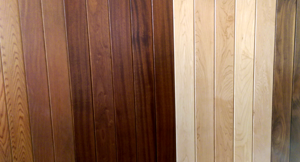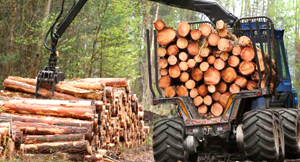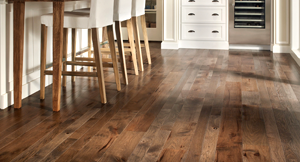Whether considering a first time timber purchase or undertaking a change from your current timber provider – DH Timber can help.
When considering the sale or purchase of single or multiple orders please feel free to contact us, we will be happy to talk through your project in confidence.
Take a moment to browse our timber inventory. Should you have a requirement for item not listed please ask us for more information.
Renowned for its high decay-resistance
The sapwood is narrow & white in colour, the heartwood is reddish-brown. When freshly felled, the heartwood often displays a marked variation in colour;
Slightly-moderately durable
This softwood, is resinous heartwood and is pale red-brown to brick red in colour, with uniform texture
Slightly durable
Scots pine (Red deal) (Native to Europe-Irish strain died out) Sapwood is straw coloured, heartwood is pale reddish brown
Douglas Fir is a very popular softwood species due to its strength and versatility. We stock both timber from North America and Europe.
Southern Yellow Pine (not to be confused with Quebec Yellow) comes from southern states of USA. It is a relatively ‘heavy’ weight softwood, used for joinery products such as stairs.
Western ‘red’ Cedar from Canada/North America is very popular because of its natural durability and pleasant aroma. When freshly machined, it looks variegated from a straw-colour up to dark brown/red, but becomes more uniform in natural light.
European Douglas Fir, is an evergreen coniferous tree imported as a fresh sawn, merchant grade of timber predominantly used for all construction purposes
Siberian Larch is a specie of tree grown in arctic conditions and under much duress, although Larch grows faster than most coniferous trees from the same area mostly western Russia.
Scandinavian Pine (also referred to as ‘redwood’ to differentiate it from ‘whitewood’ such as Spruce) is imported from Sweden, Finland and Russia. The grades vary for different uses.
Sweet Chestnut is an English hardwood which used to be a cheap alternative to Oak. Good quality Chestnut is currently scarce and should not have ‘ring-shakes’ or yellow discolouration.
French Oak is grown across the whole country, but we predominantly source timber from the Burgundy and Dole regions. That’s because this area of France is close to the Swiss border and the trees here tend to grow more slowly due to the relatively harsh conditions.
Unsteamed prime-grade German Beech is imported square edged and sometimes logsawn (waney-edge). Beech is prone to heavy movement down to the denseness of the timber and also stresses within the timber that occur after machining
West African Wenge is very dark brown with close ‘black’ veins alternating with ‘pale’ bands and is therefore favoured by furniture makers.
Malaysian dark red Meranti varies in colour from pale pink / white to dark red / purple. The density can also vary substantially as there are numerous sub-species.
West African Utile is a ‘sister’ species to Sapele but usually has a more interesting grain and gives a better ‘finish’, albeit at a higher price. Widths and lengths may be a little smaller than Sapele.
Sapele predominantly from West Africa is a reddish-brown hardwood. Although some parts of the Sapele logs will produce straight-grain or ‘quartered’ effect, generally it has a more random grain appearance
West African Iroko is imported at grade FAS, mainly kiln dried. It is yellow when freshly machined which quickly changes to medium, then darker brown).
The sapwood of walnut is creamy white, while the heartwood is light brown to dark chocolate brown
The sapwood is creamy white and may be streaked, with the heartwood varying from pale yellowish brown to olive green. The green colour in the heartwood will tend to darken on exposure to UV light and turn brown.
White oak is similar in colour and appearance to European oak. The sapwood of American white oak is light coloured and the heartwood is light to dark brown.
The sapwood of red oak is white to light brown and the heartwood is often a pinkish reddish brown.
In most respects the wood of soft maple is very similar to that of hard maple, although due to its widespread growth it may be more susceptible to regional colour variations.
Please fill fields below and we will contact you at a time that suitable for you
Whether considering a first time timber purchase or undertaking a change from your current timber provider – DH Timber can help.


